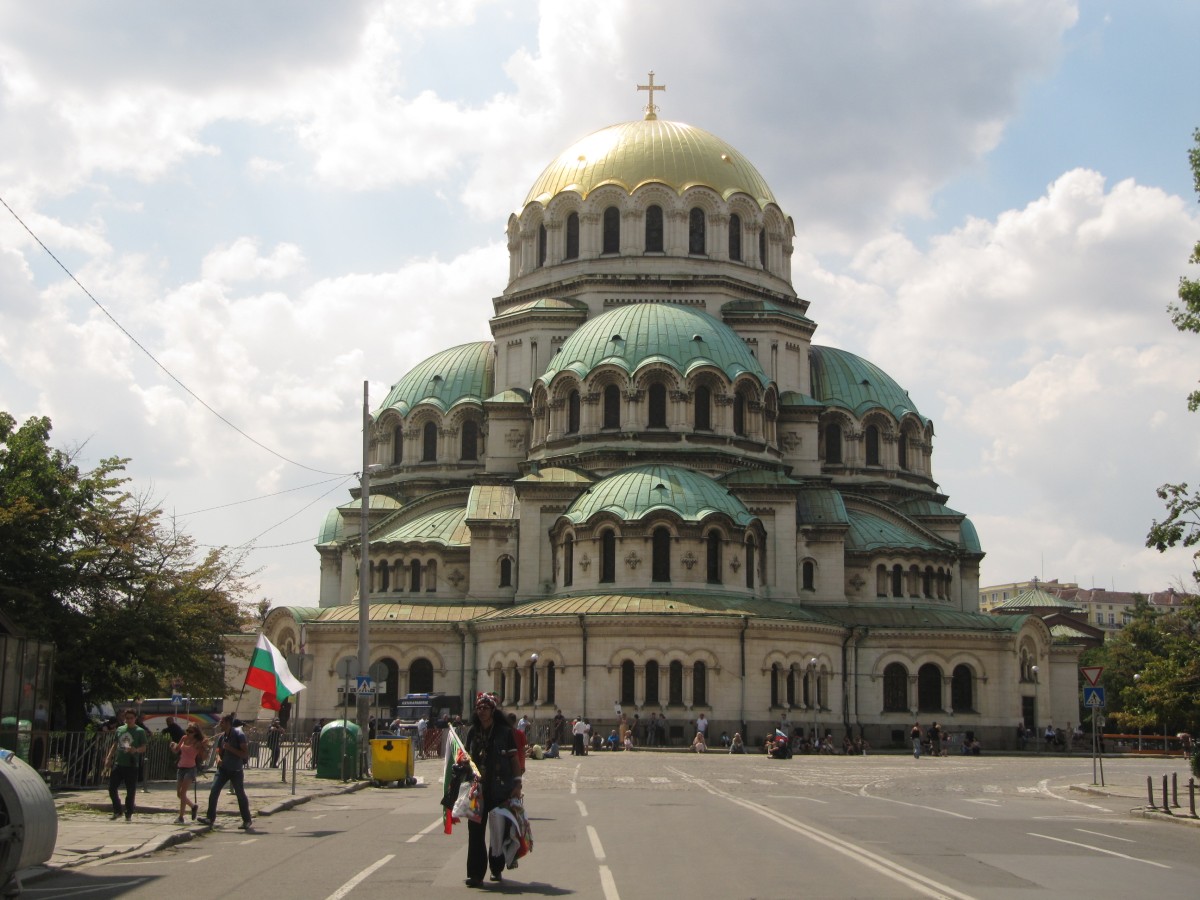The modern Danube ferry from Turnu Magurele/Rumania to Nikopol/Bulgaria departs only twice a day. Even though it takes just 10 minutes to cross the mighty river and the next bridge is 100 kilometers away, the service is hardly used. Apparently there is little interest in each other.
Long stretches of sunflower fields are framed by Ganja plants beside the road. In contrast to our last day in Romania, there are hardly villages between Nikopol and Pleven, and no ATMs. Giant farm machinery on the roads rather than horse carts. The good thing is, there is no grannies to protect the plum trees from hungry cyclists.
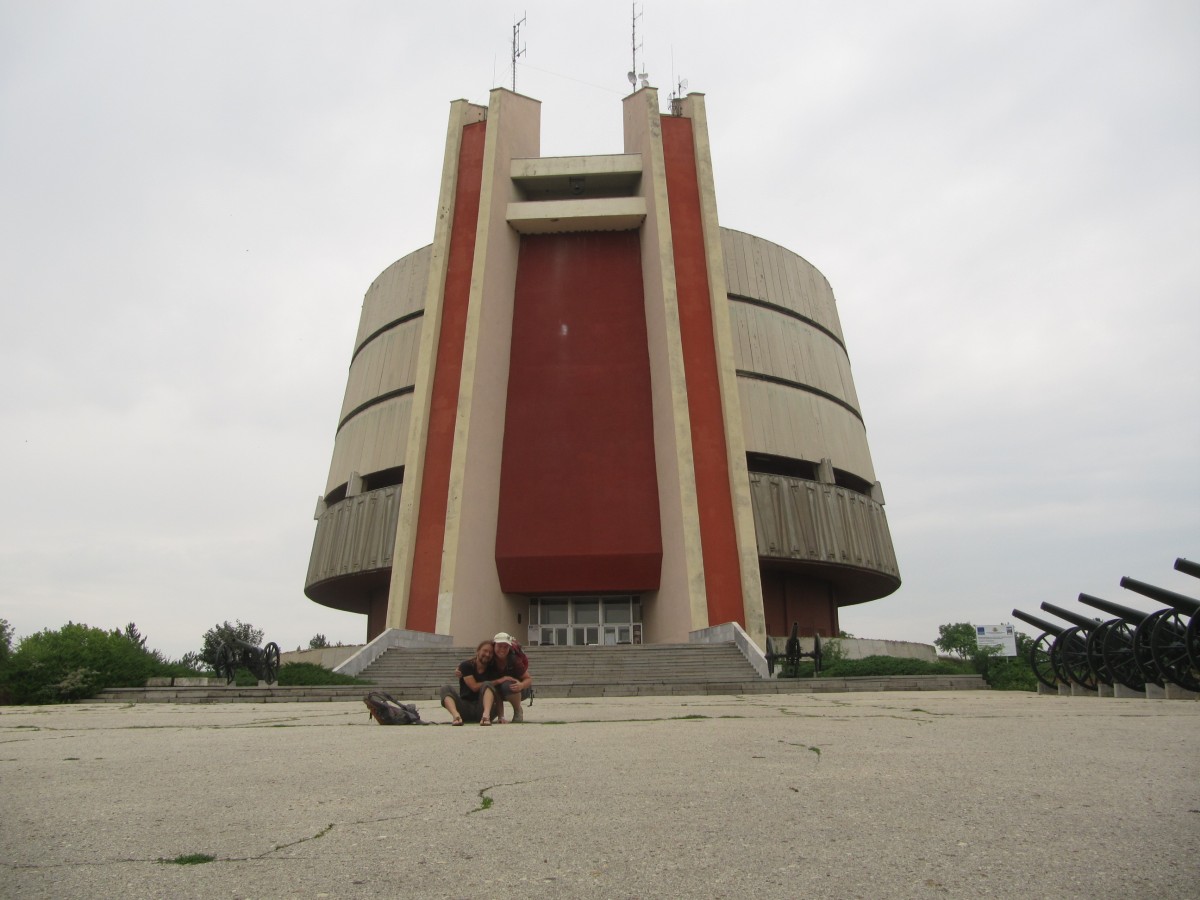
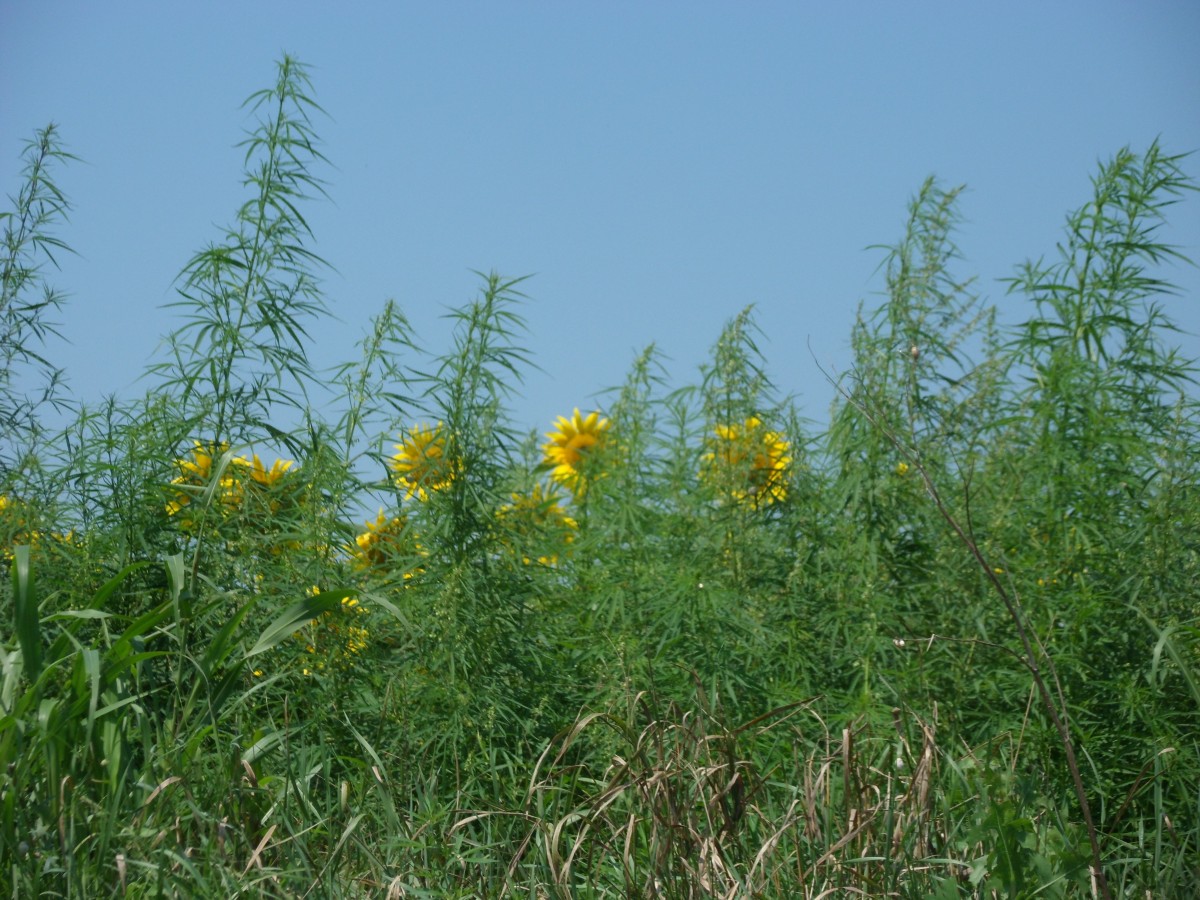
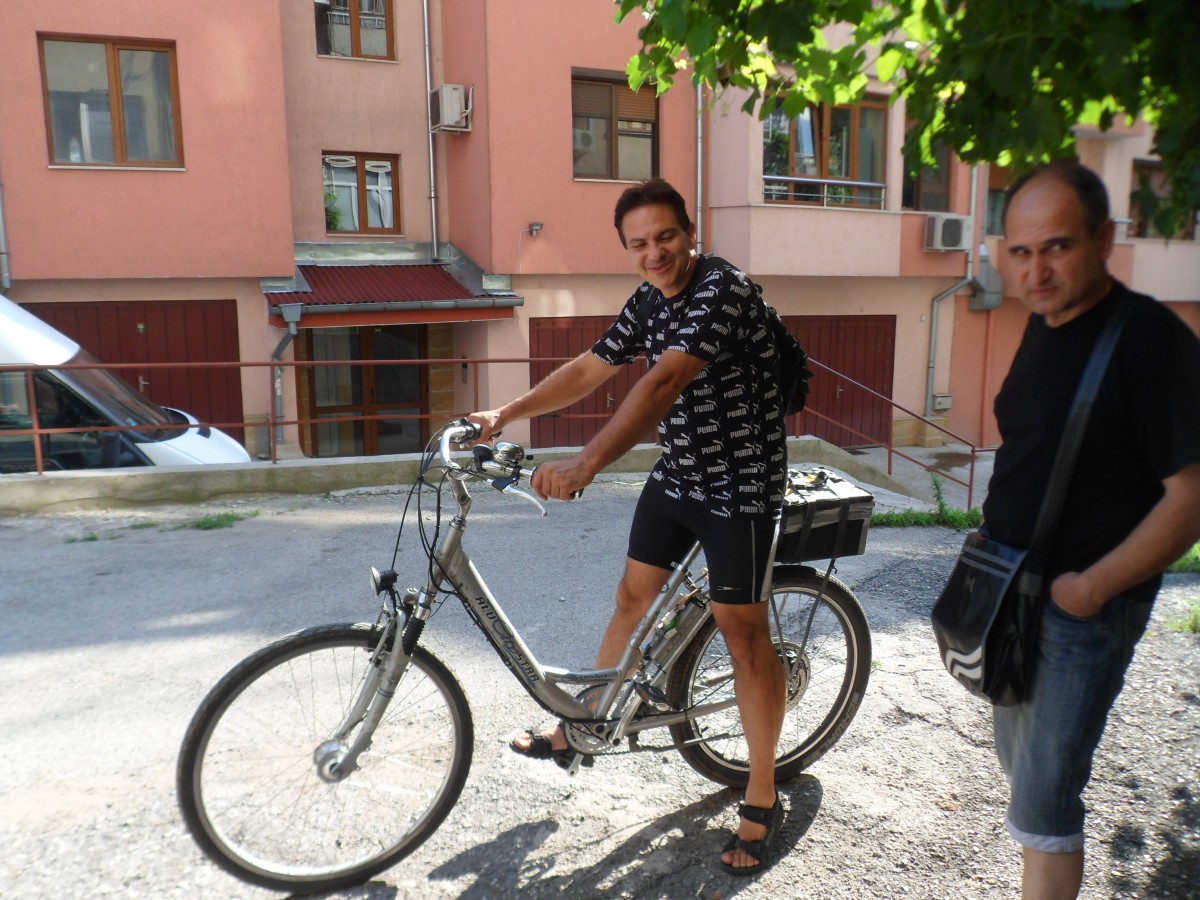
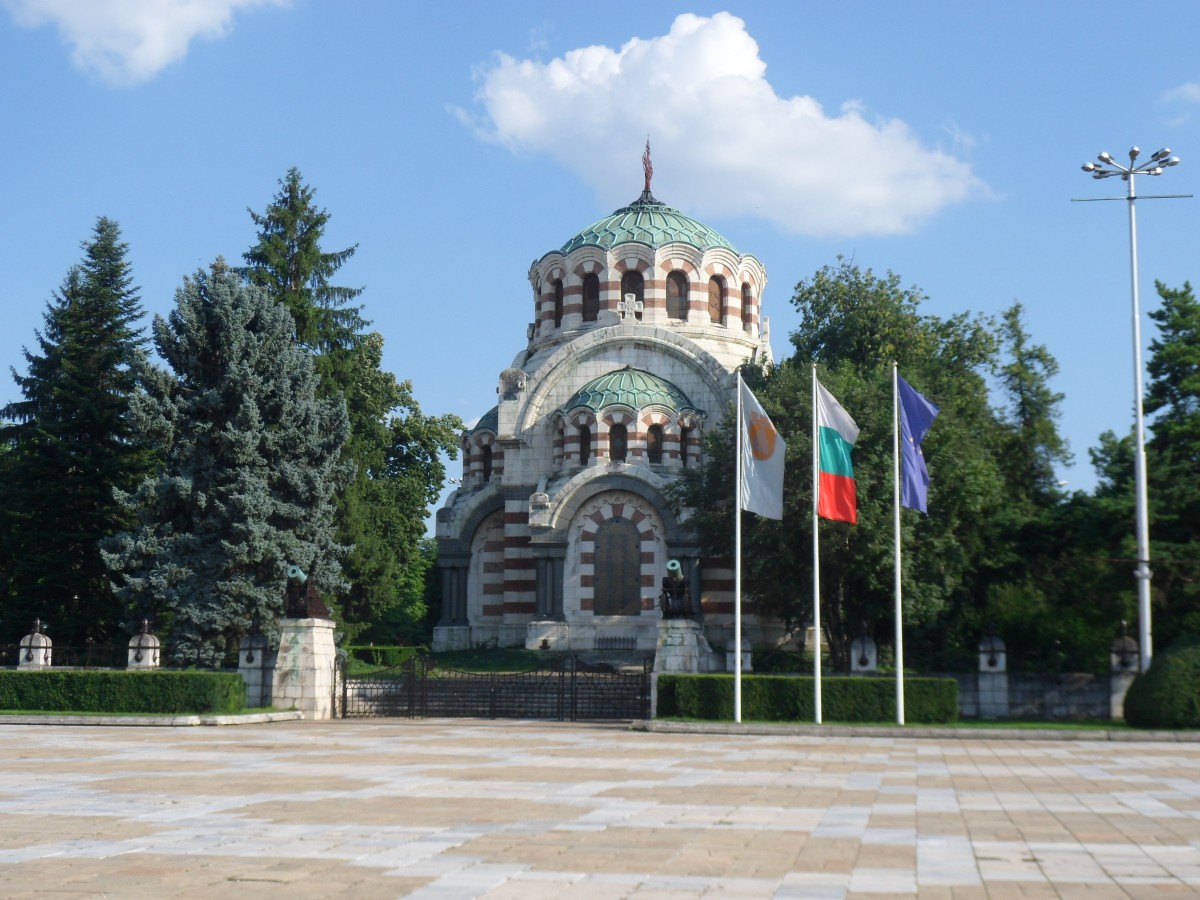
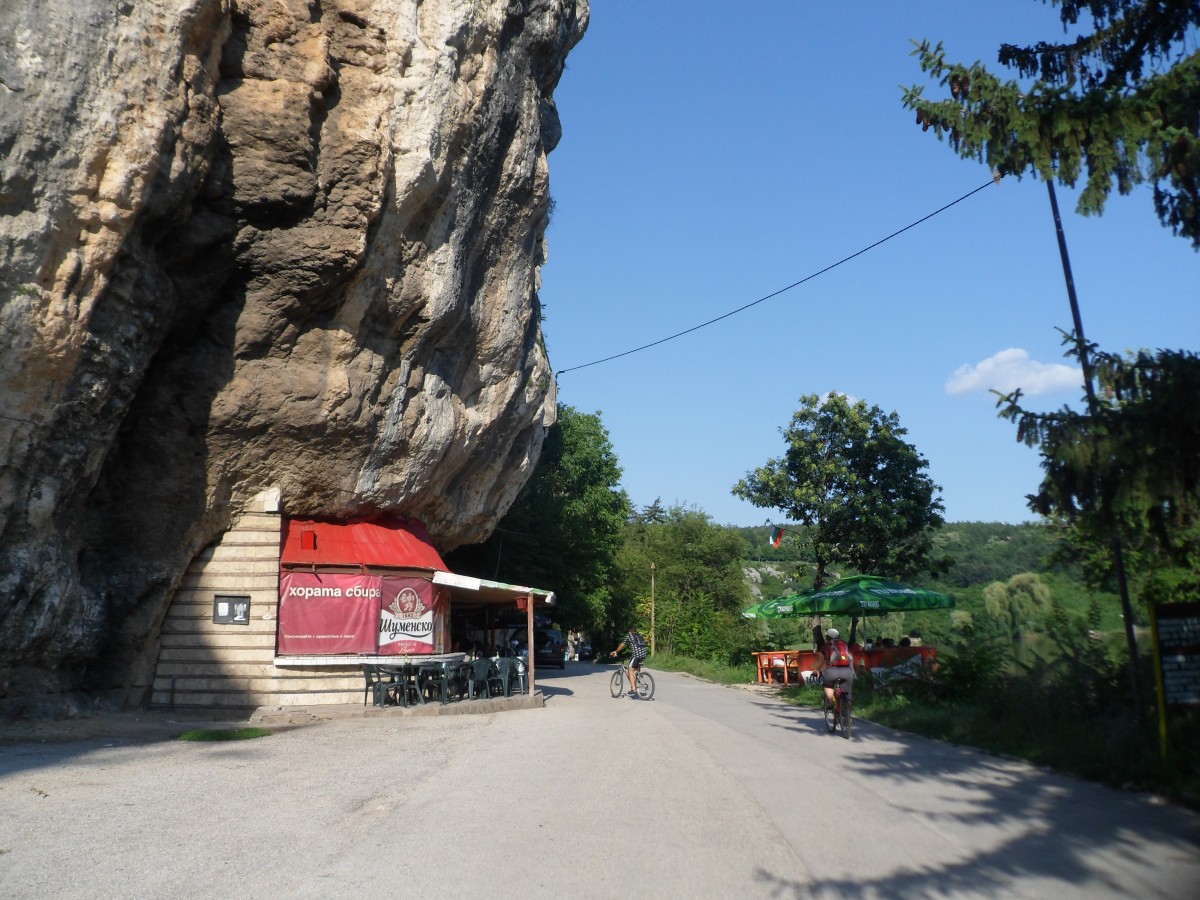
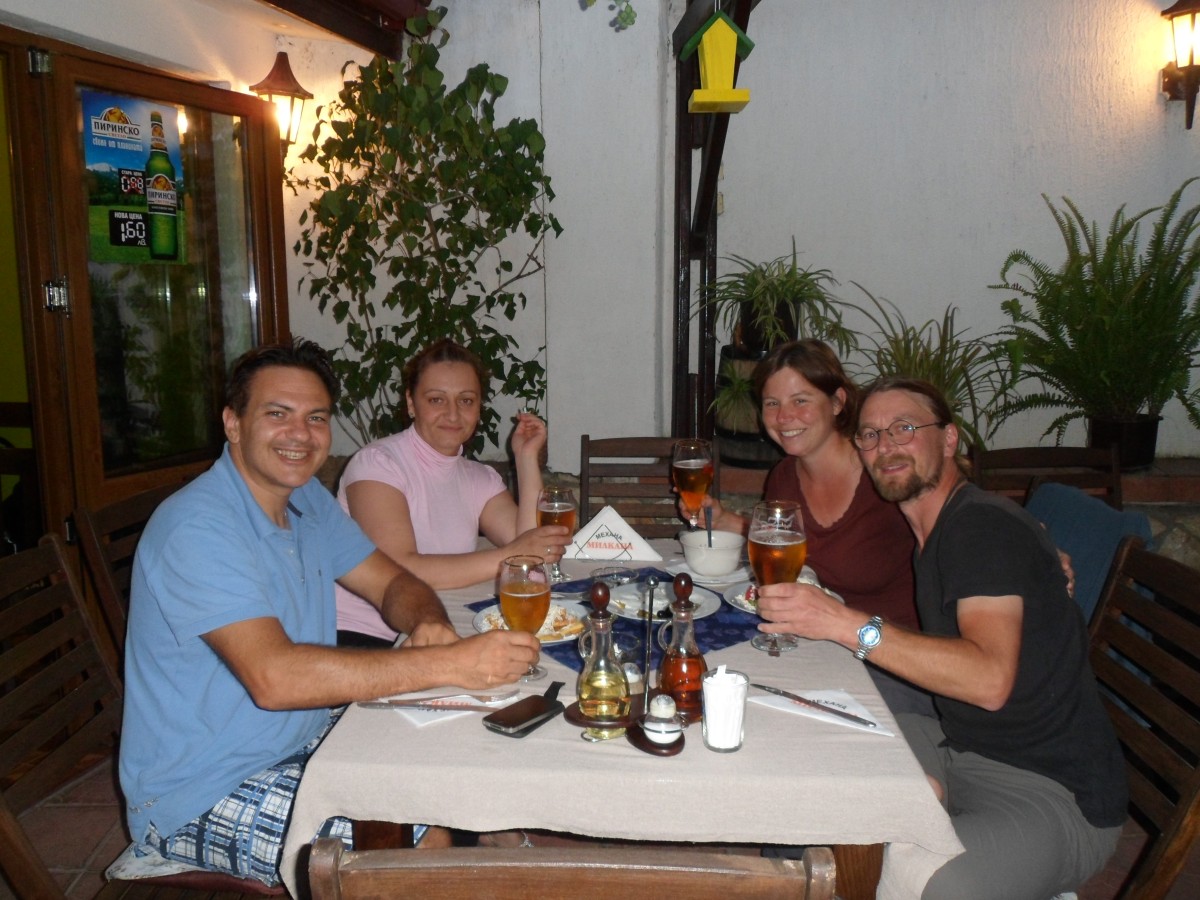
Signs are written in Cyrillic, and sometimes in Latin characters. I'm thankful now I had to learn Russian language in school. After a few hills with aching legs we get into Pleven, the fifth largest city in Bulgaria. Kathrin interviews the tourist information on the central plaza, when a man on a mountain bike stops by and asks me where I am from and so on. I ask him for a bike shop to center my rear wheel. He replies that he's building bikes, and shows pictures of his self-made E-bike. Zezi is his name, he would look after my wheel and invites Kathrin and me to stay in his flat. So we rush after Zezi through crowded pedestrian areas and streets on wound bums. His flat is an incredible collection of more or less self-made electronic devices, books and pillows - Zezi is a creative genius.
After a shower and a nap Zezi invites us to cycle to a nearby park. Actually, we go to the famous Kaylaka park some 15 kilometers away. The citizen of Pleven have made this beautiful park after World War II. Ponds, meadows with flower beds, forests of old trees. At the end of the park there is a lake framed by 20, 30 meter high rocks. Hikers and cyclists hang out in small restaurants between the rocks and the lake.
Pleven became famous for the big siege during the Russian-Turkish war in 1873 that initiated the retreat of the Ottoman empire from the Balkan after some 500 years. Tens of thousands of men died in the brute battles, leading English observers to statements like "A battle without strategy is pure butchery". The communists erected a giant monument on the battlefield hill hundred years later, and put a museum inside. Weapons are displayed, and some big paintings illustrate the events that lead to the war. In the top floor, a 360° painting displays a battlefield. In front of the painting, the scenery is modeled with trenches, scattered guns and broken horse wagons. It looks so realistic, one can almost smell the stench of war.
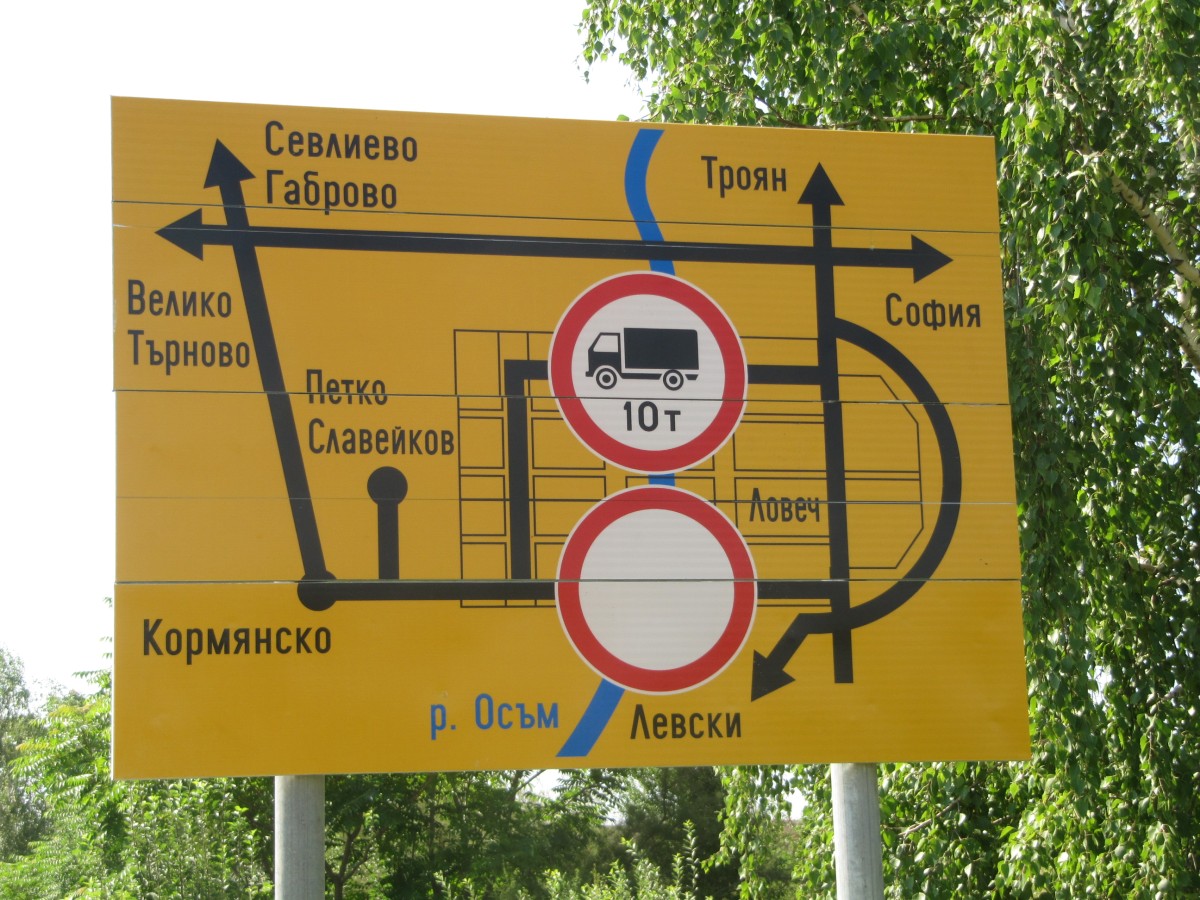
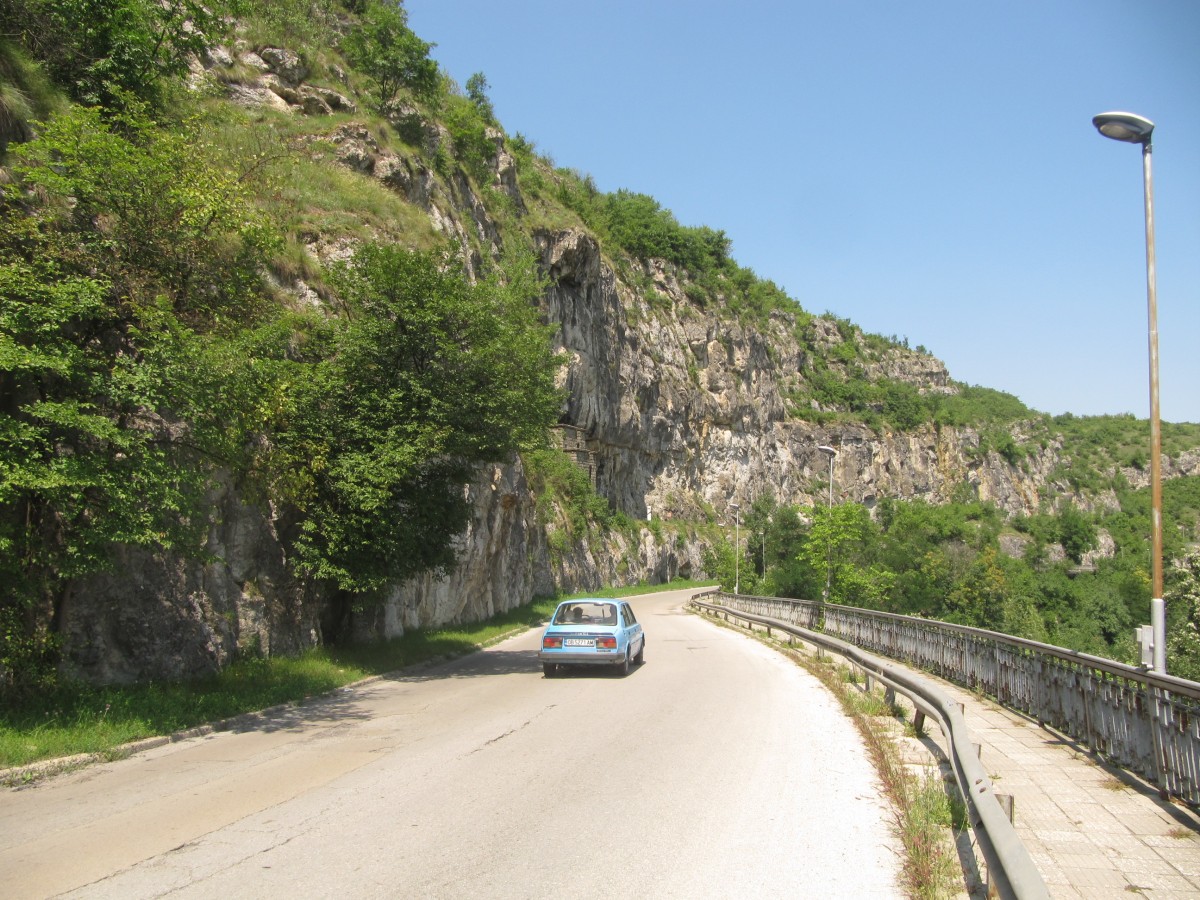
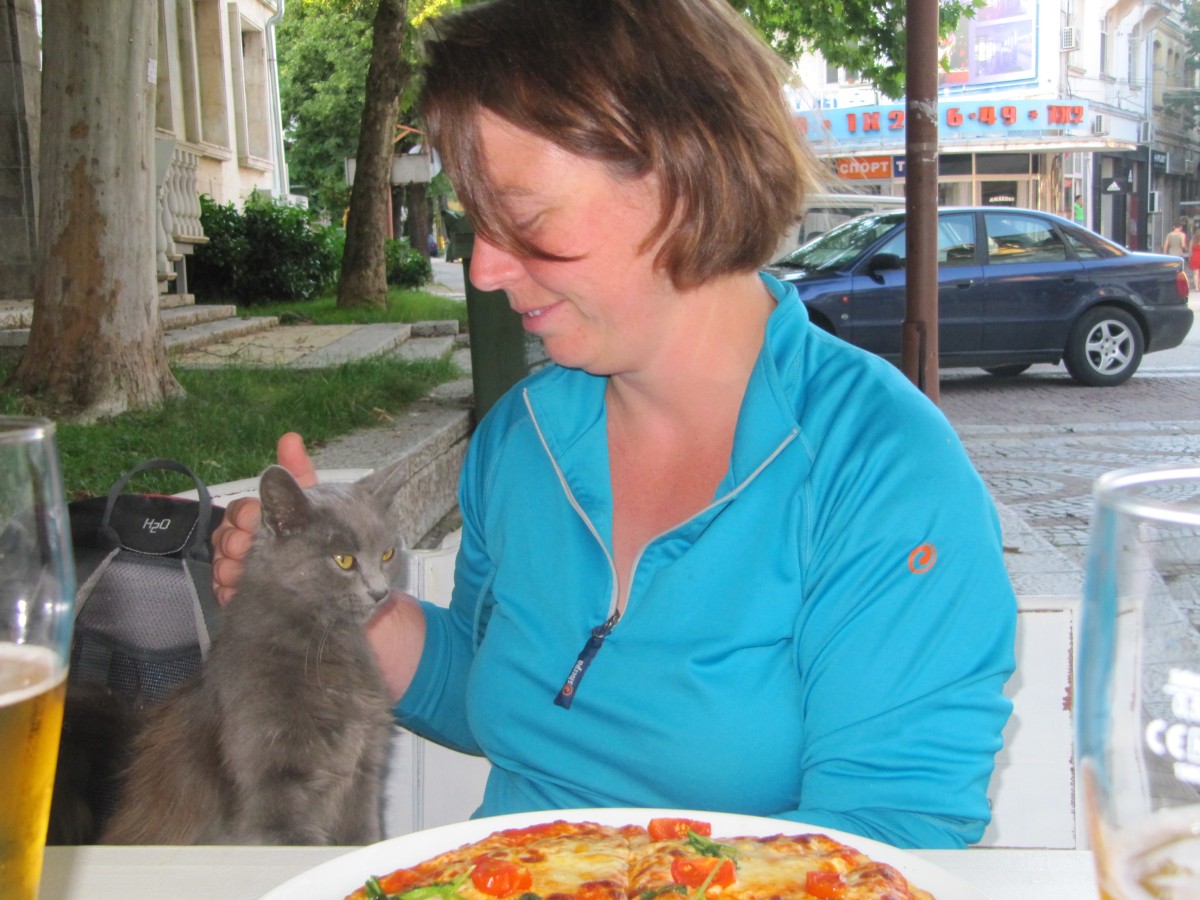
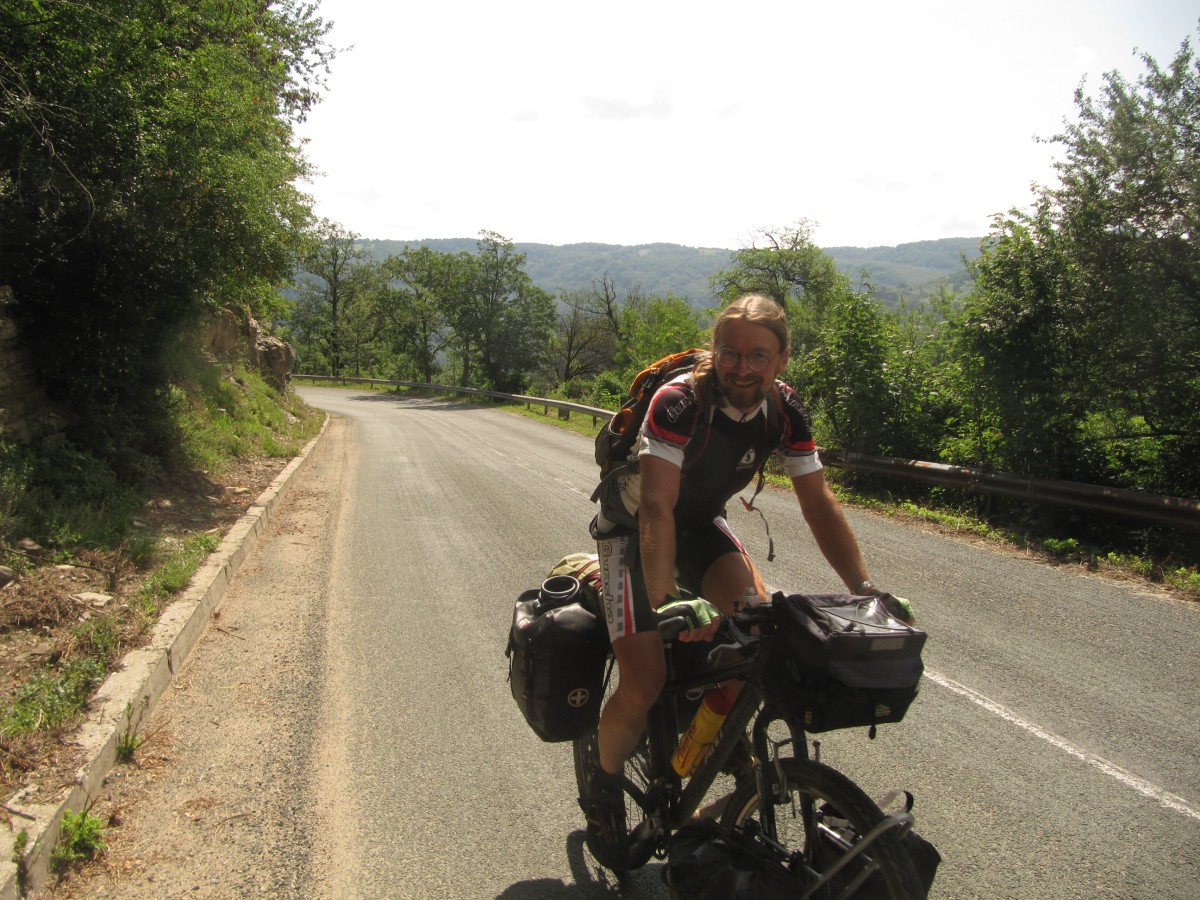
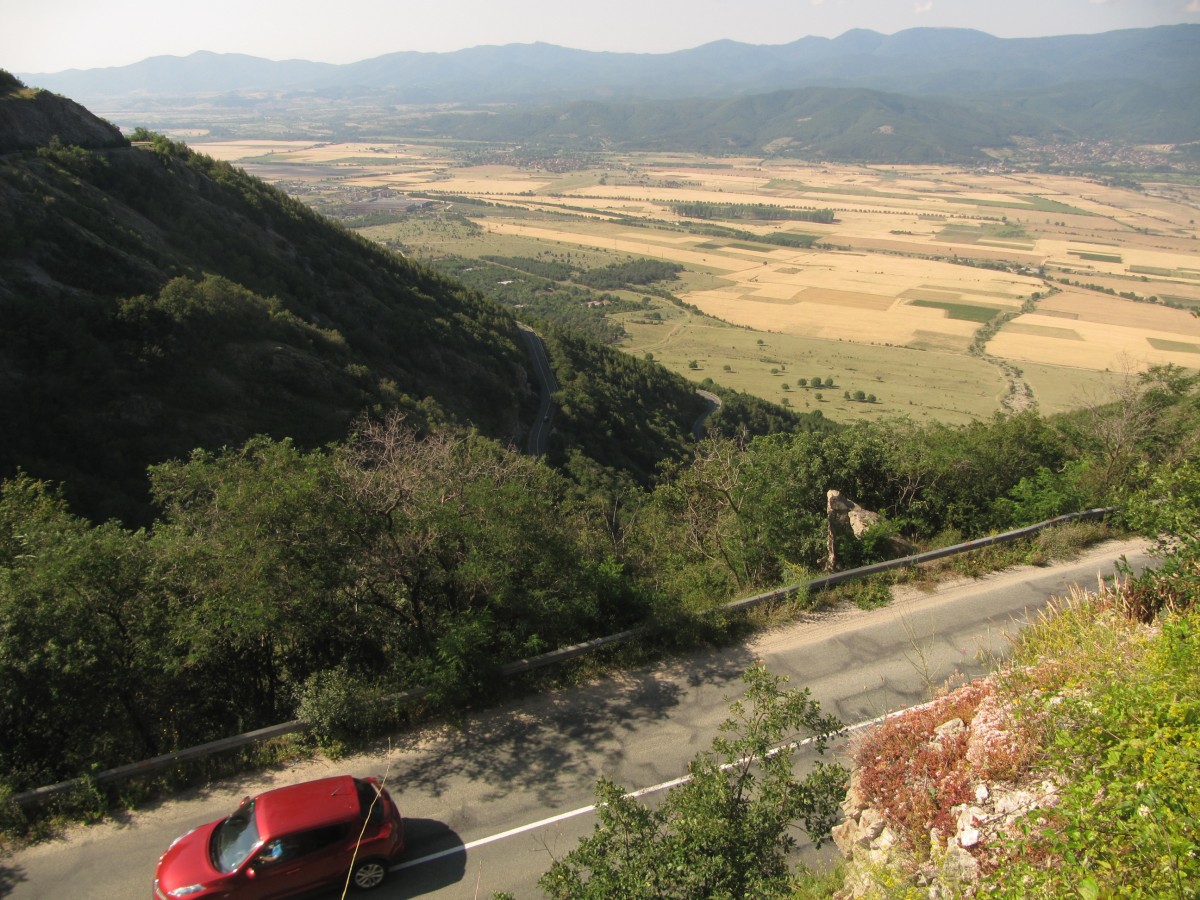
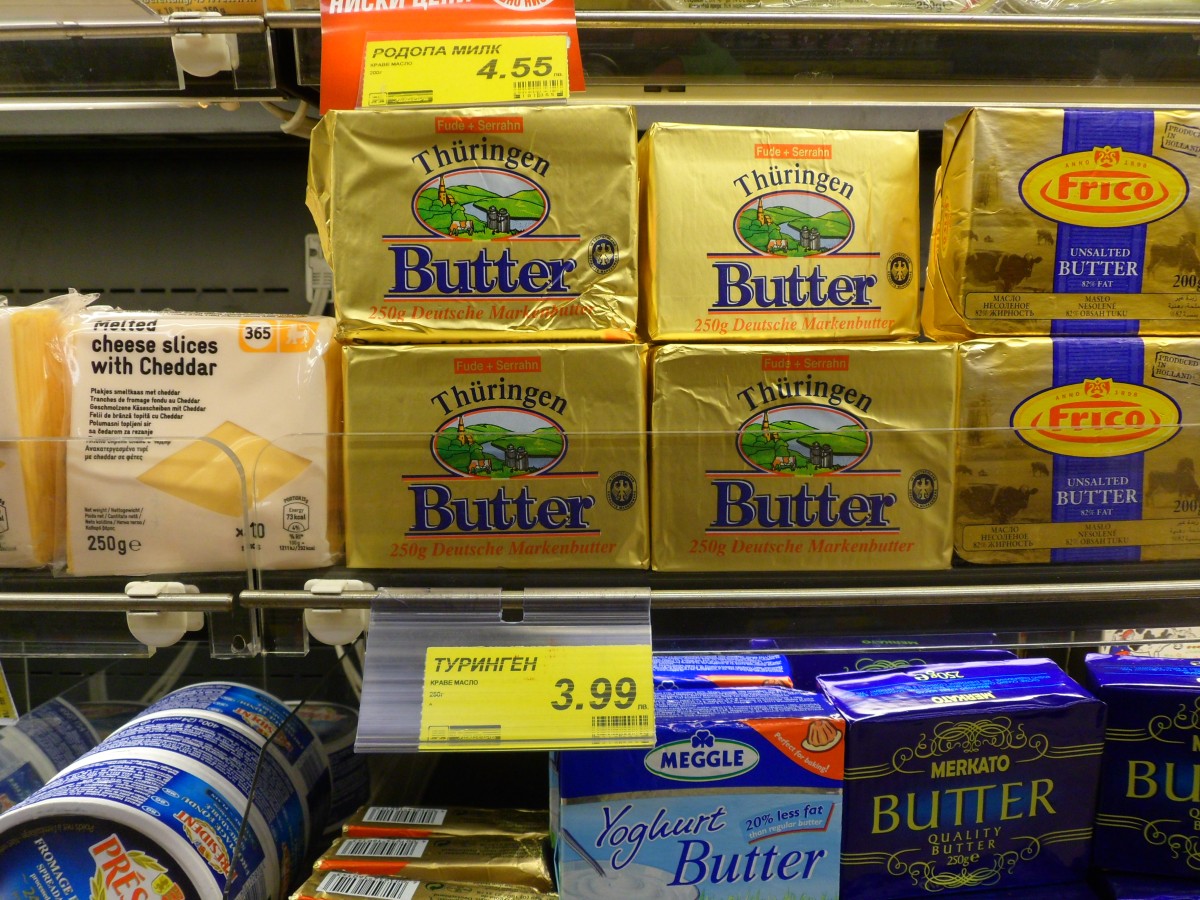
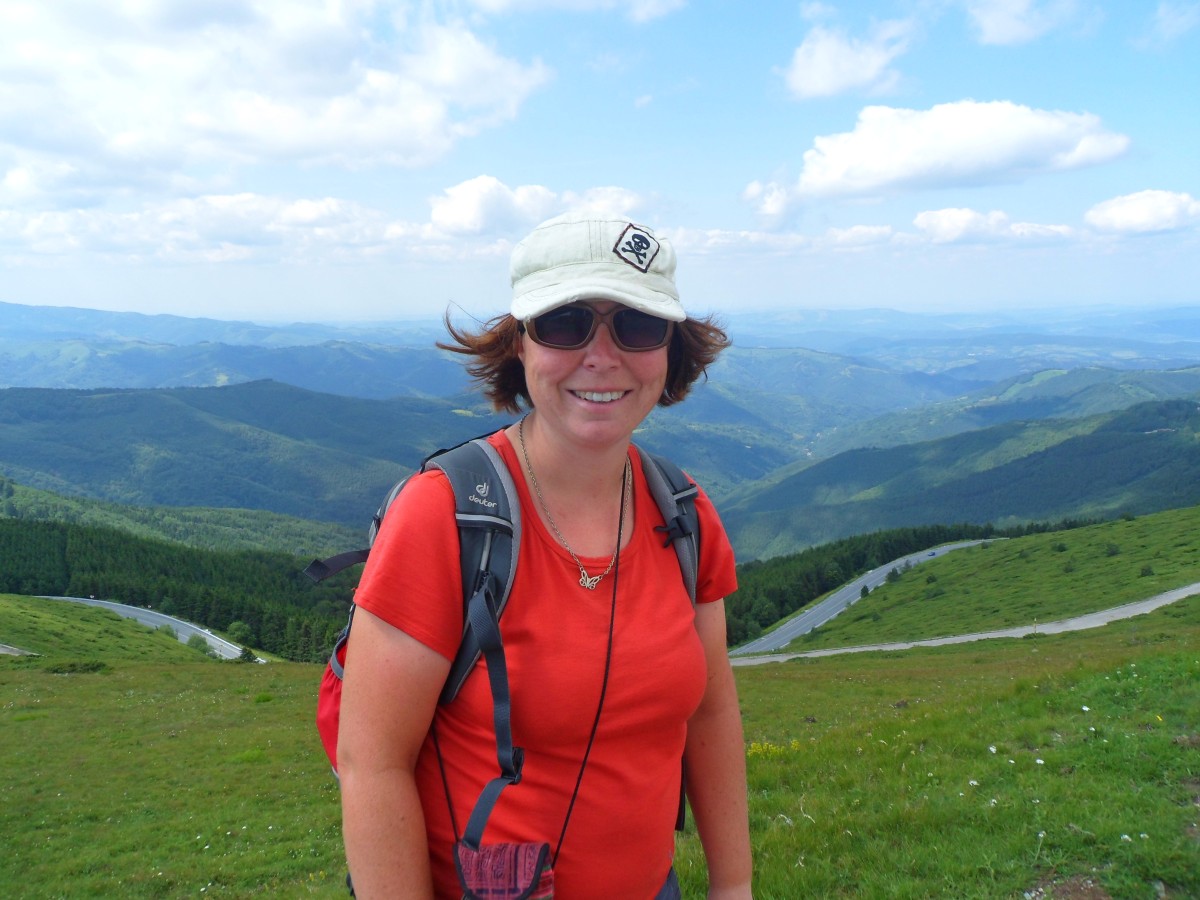
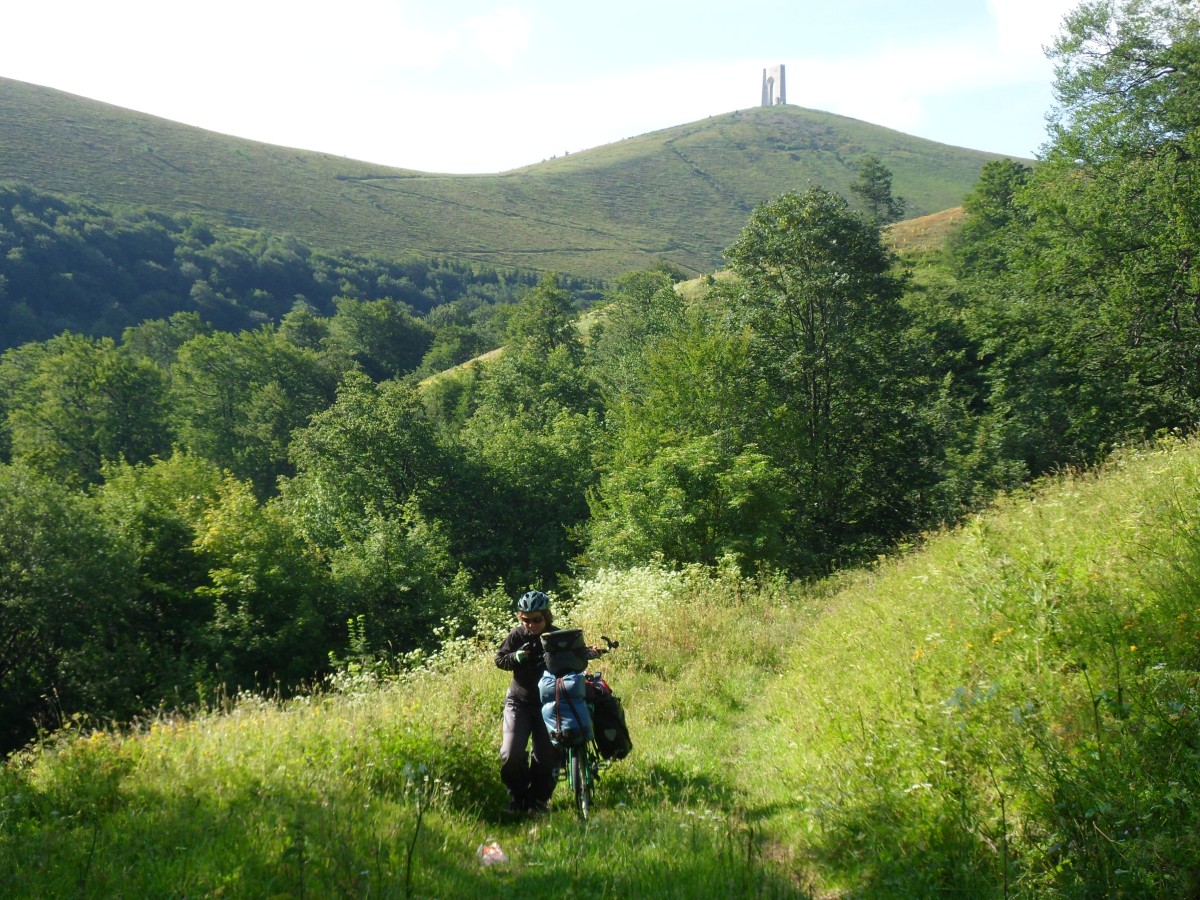
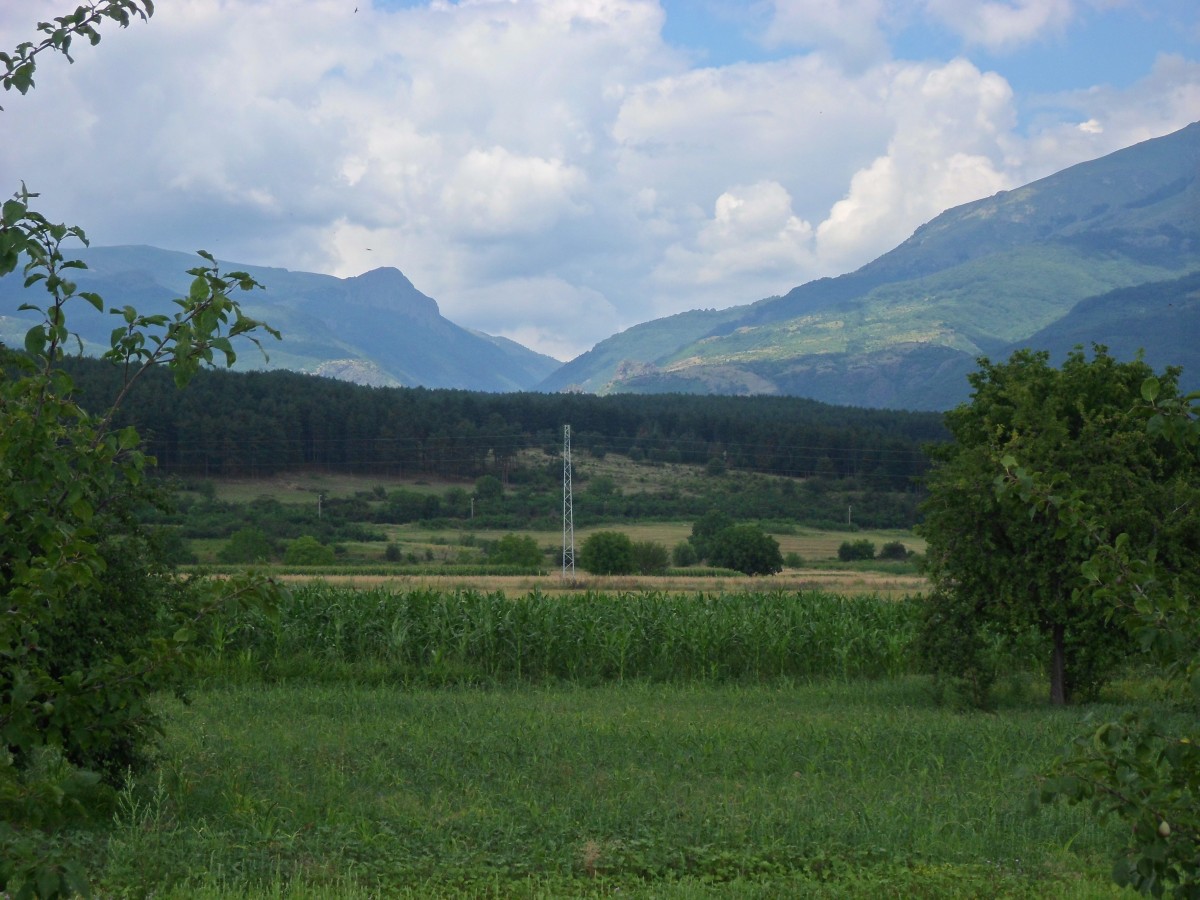
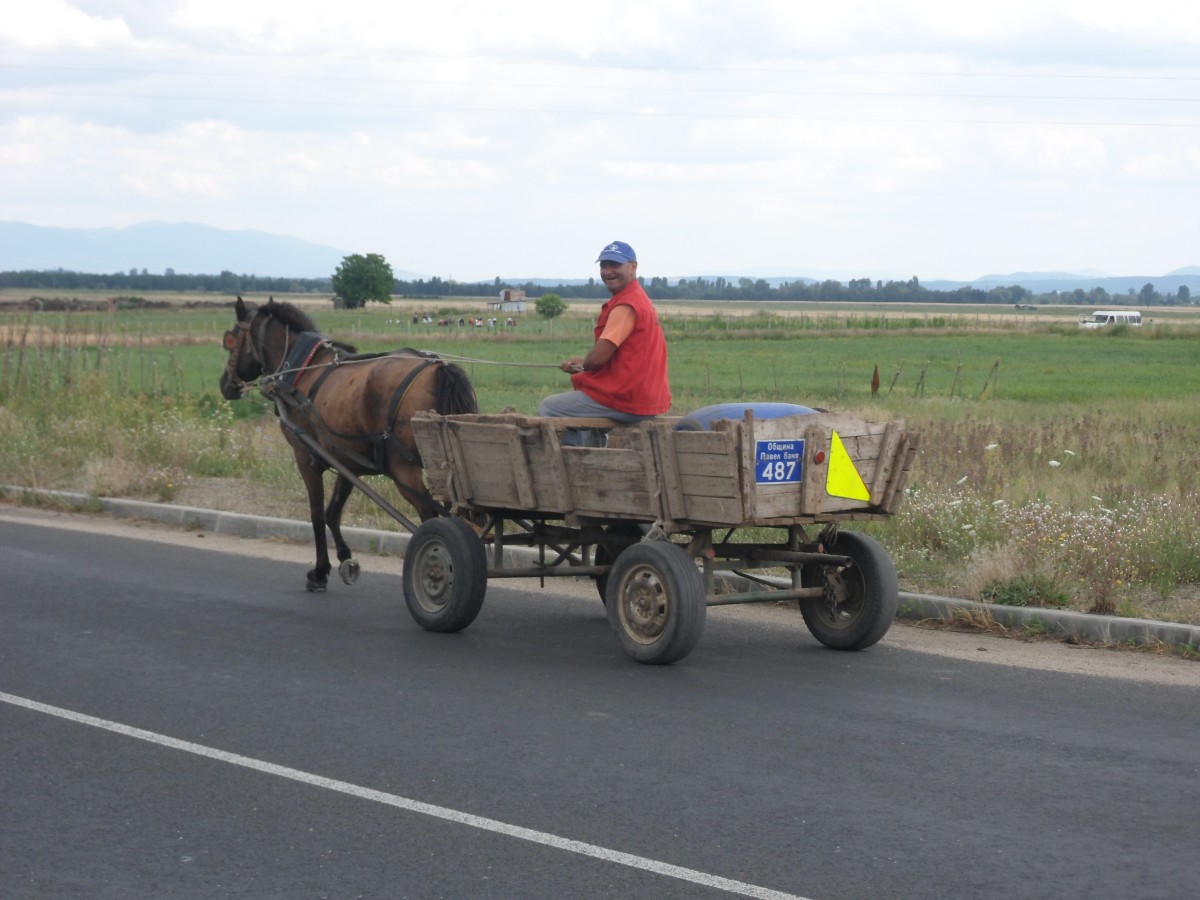
We cross the Balkan mountains at the Troyan pass. A fine forest of beech and oak trees leads from Troyan up to Beklemento. There are no trees on top of the pass, the land is used for sheep and sweet blueberries. We compete with a dozen of gypsies that harvest the berries professionally. A giant concrete monument honors Russian soldiers of the big wars. The strong wind up here chill my stealth-camp-mood. Luckily we find an abandoned farm a few kilometers down the road. It is a great spot to camp, hidden above the street and surrounded by mighty trees and beautiful views up to the pass and down into the valley.
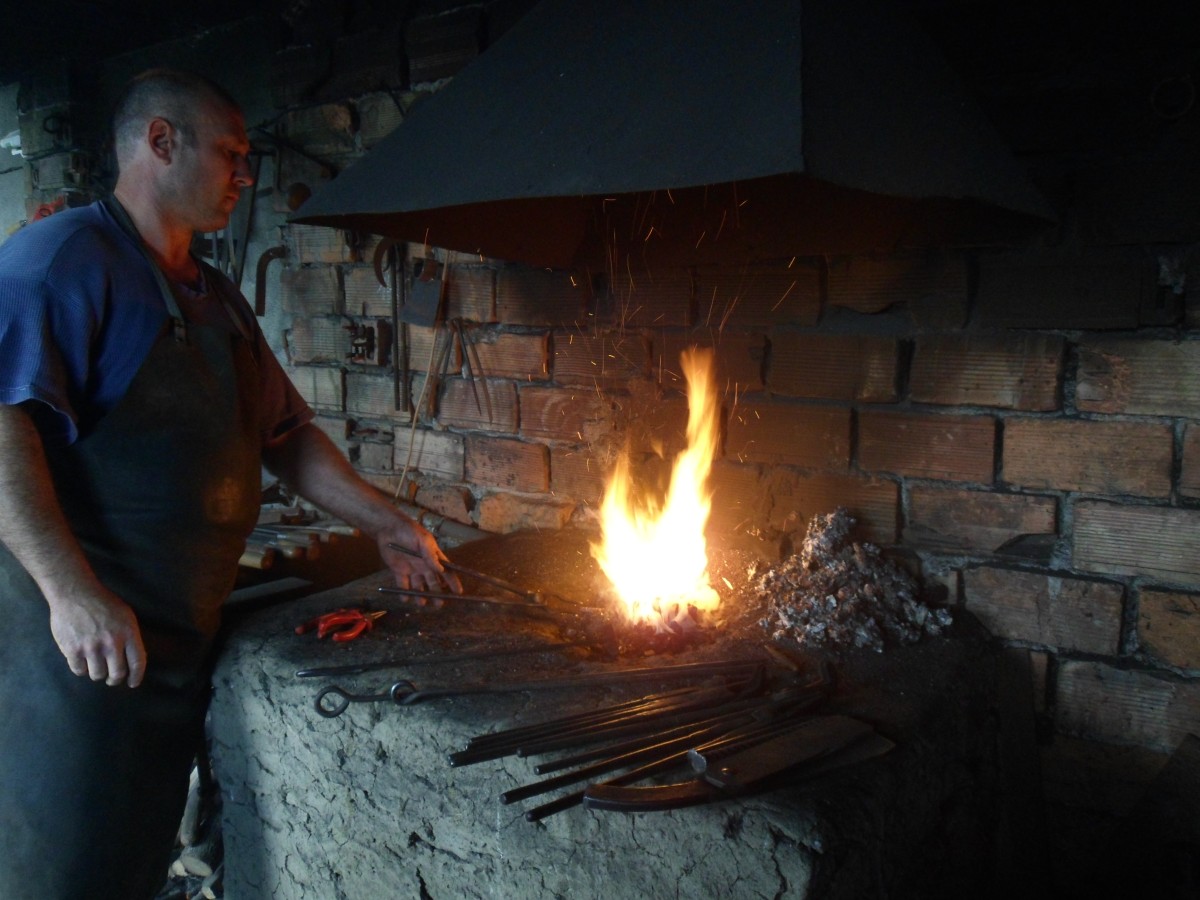 |
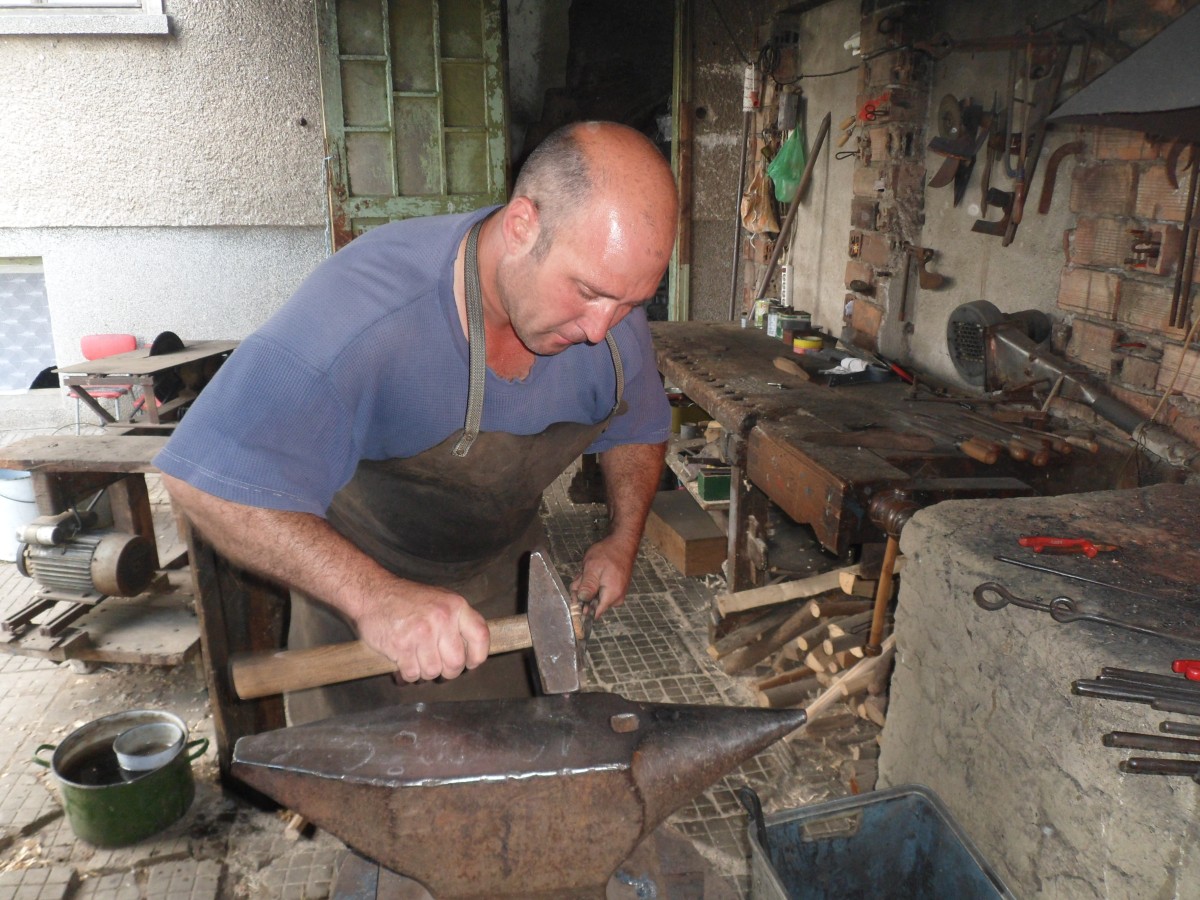 |
In Kran we are picked up by the local blacksmith while fetching some cherries from a tree on the street. Stefan is his name. He asks us to follow, leads us to his cottage, and shows us his traditional workshop. With a few splinters the fire is started, and with a few dozen skillful hits with the mighty hammer, an iron rose leave is created, then another one. Souvenirs for us, Stefan smiles. We share the beer we just bought in the market, and talk about his family, his job, about Bulgaria. The Stefan sings us a gospel from the Orthodox church. When we leave, our bags are full of vegetables and fruits from his garden, and our hearts overwhelmed by the hospitality.
Just outside of Stara Zagora we are happy see the first road sign for Istanbul. Like other towns we have seen in Bulgaria, most buildings are less than 50 years old. Yet here, there are thousands of years of human history buried under the streets. Already 5000 BC man settled here, living from agriculture and copper craft. The Tracians lived here, then the Romans. All left their traces, displayed in a great history museum. In its basement, an original Romans street is excavated, and outside an amphitheater is being reconstructed.
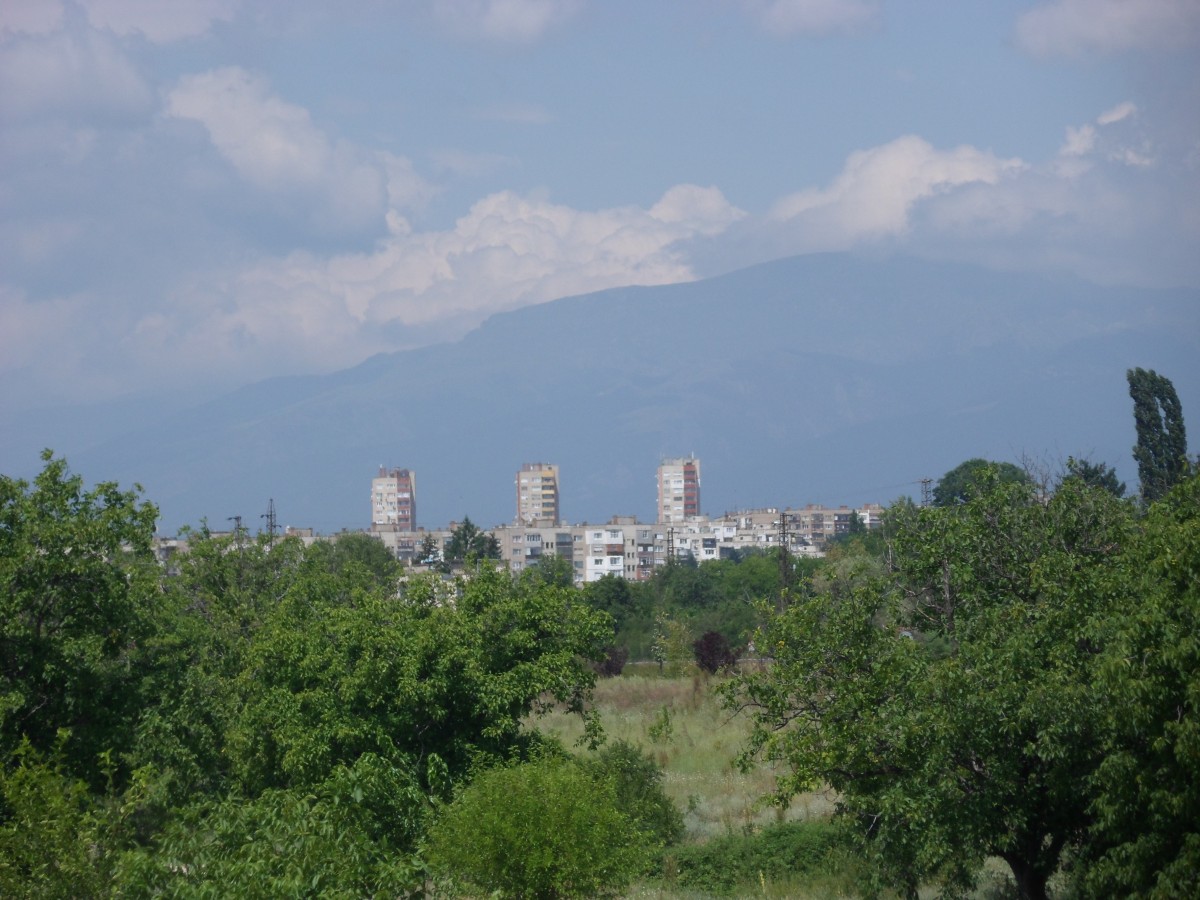
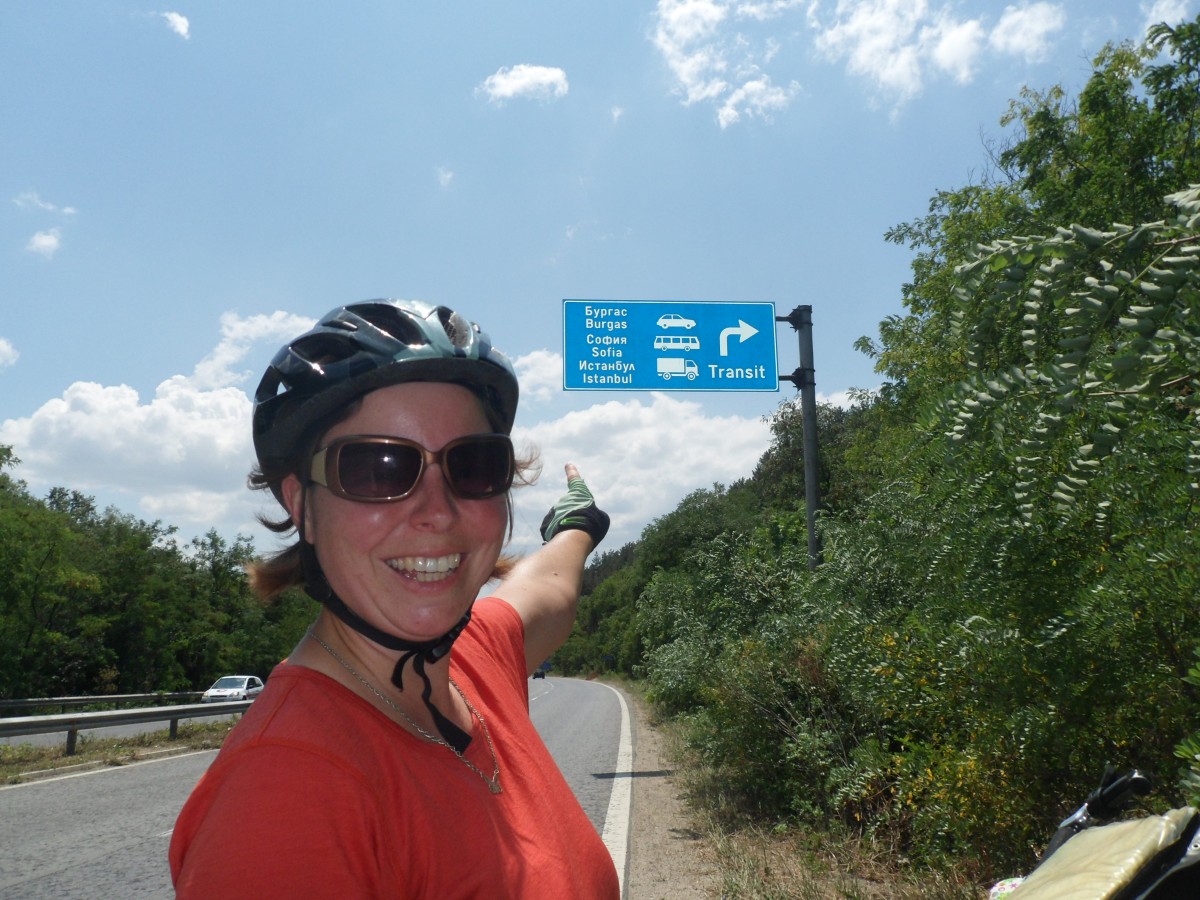
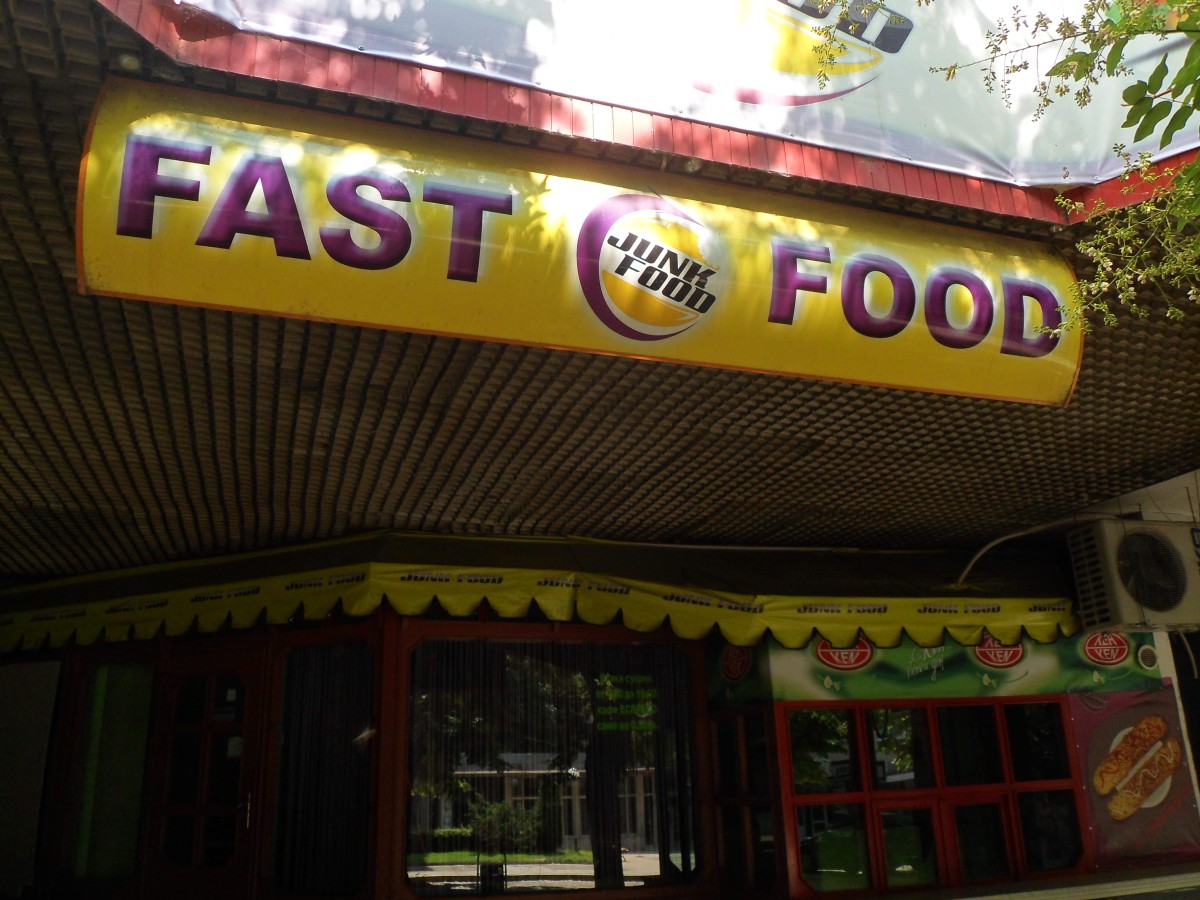
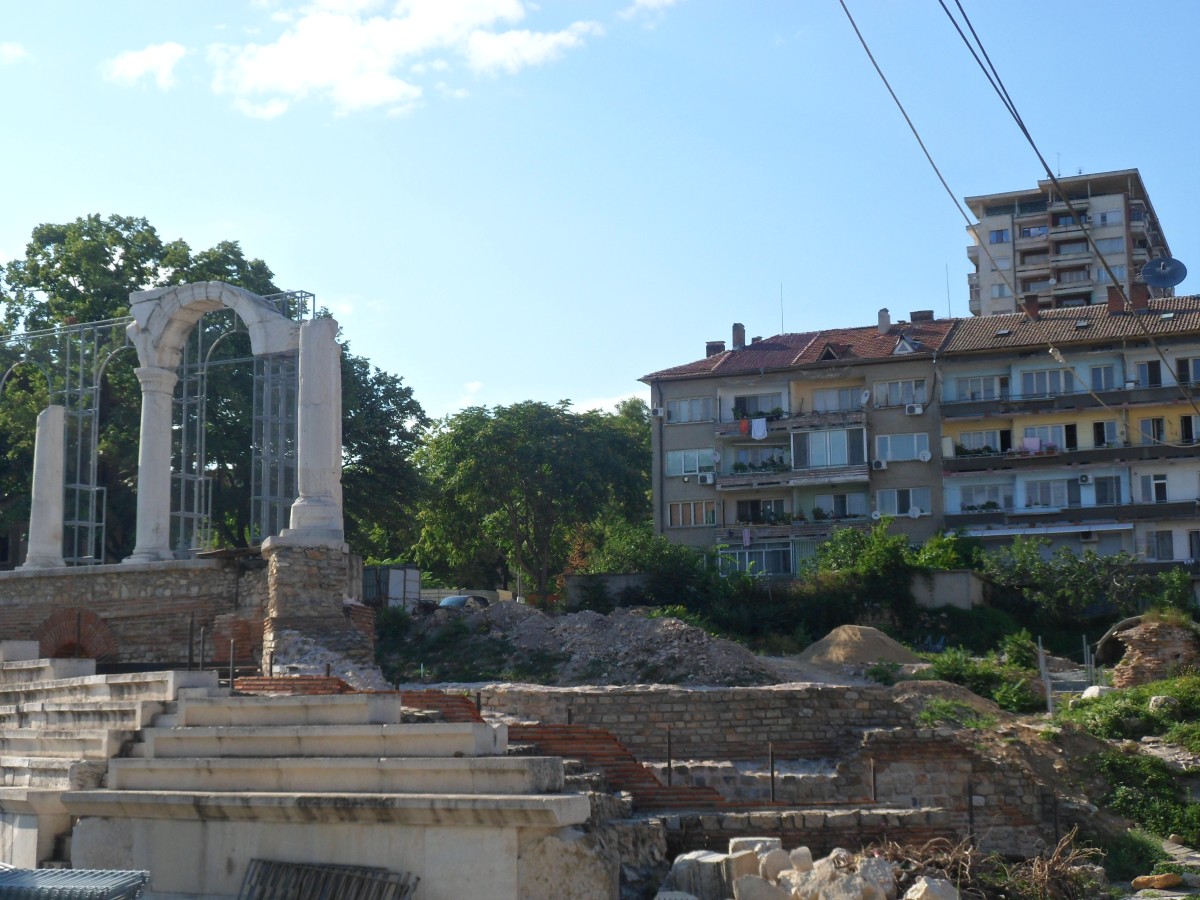
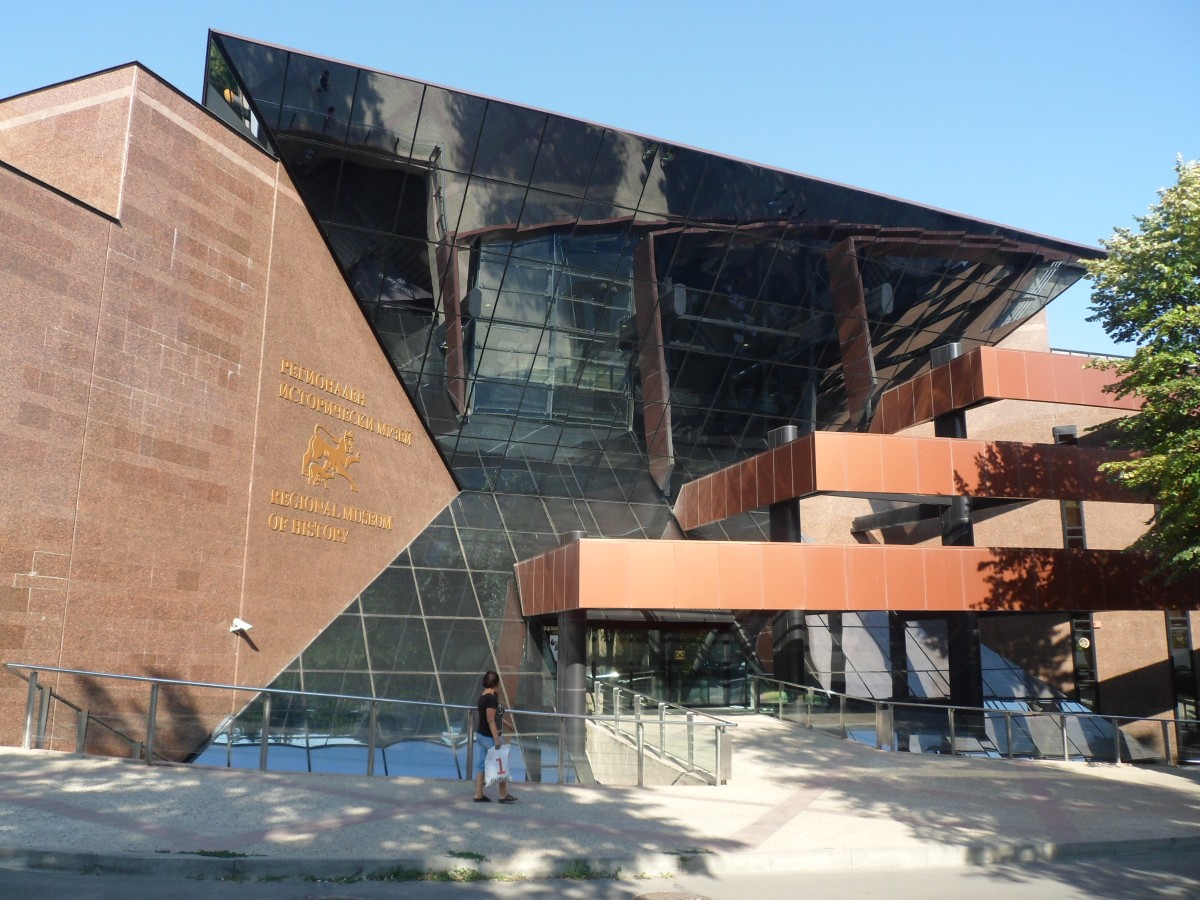
We take a slow train from Stara Zagora to Sofia. A young lady near us speaks fluent English, and is very literate. In Sofia there is a great tourist information, somewhat hidden near the Sheraton Sofia Hotel. On the maps provide there, we see many historic places and great landscapes we have missed on our way through the country. However, we visit the synagogue and the Bajan mosque. It is my first time in temples of these religions – I marvel about the rich ornaments without painful dark paintings of saints and evil. In the courtyard of the Sheraton Hotel is a small but impressive Rotunda church that is 1600 years old. Nearby, a thermal bath erected by the Ottomans. Outside we fetch some healthy water from a tap. Sofia is said to be the capital with the best water in the world.
Protests against the corrupt government still go on near the Nevsky Cathedral. People of all ages sit with banners in front of small tents, or cycle around with whistles and Bulgarian flags. As we hear, there are three big parties ruling the country, without opposition in the parliament. Now the government claims it was elected, and won't change. Some Bulgarians call it stubborn Donkey behavior. Hundreds of police man block any access to the government buildings. With a big detour, we reach the impressive Nevsky Cathedral with its giant green dome and the white walls.
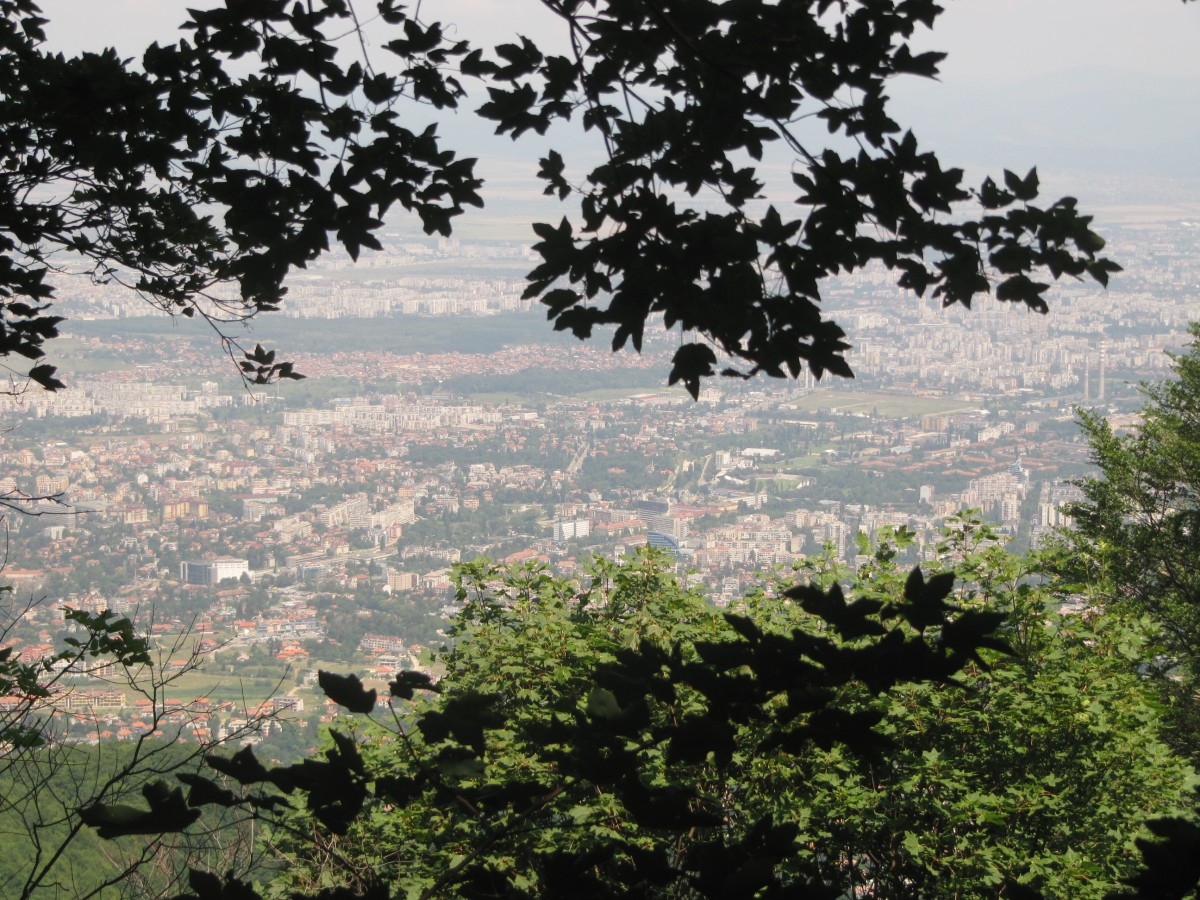 |
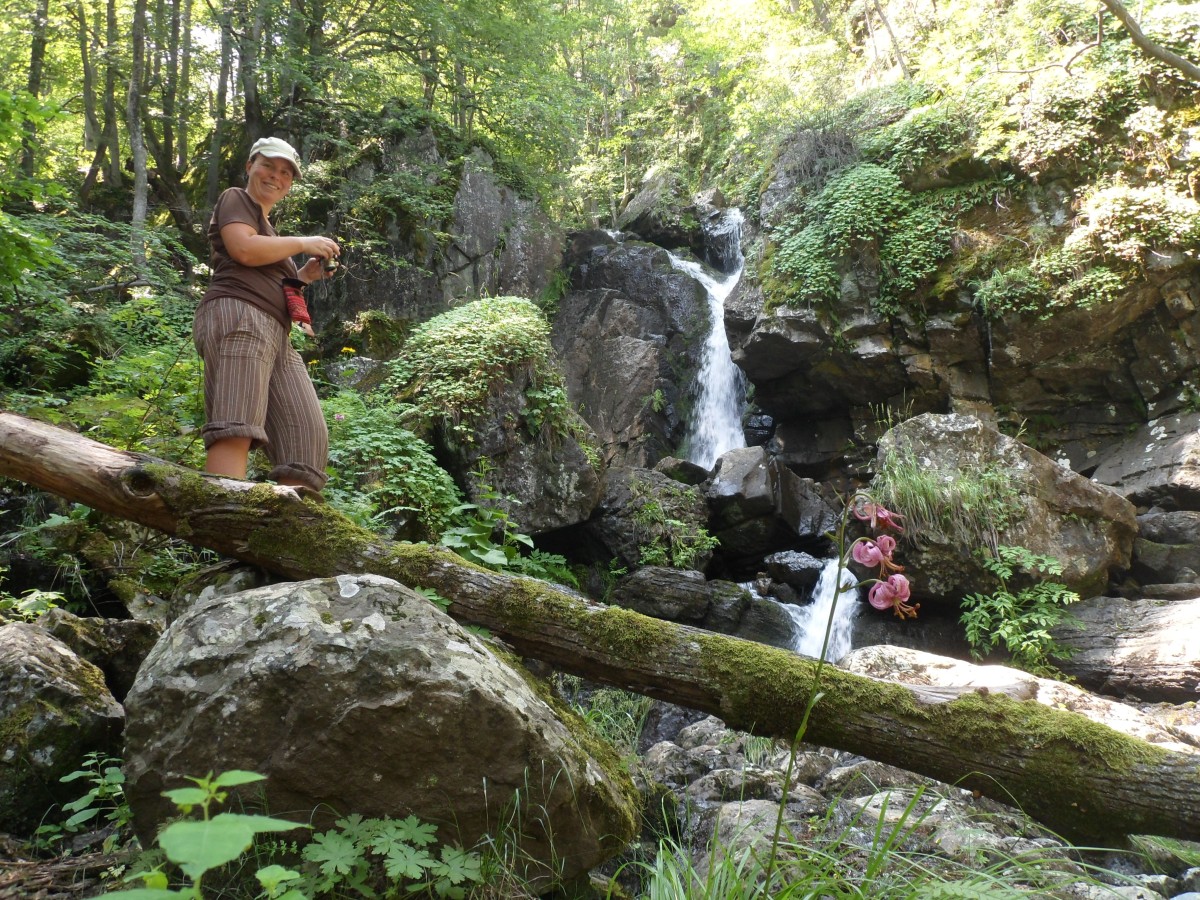 |
On the next day we take a city bus to the Boyan church on the Southern outskirts. From the distance I can see the canopy of some trees that looks very familiar to me. A mighty trunk with soft red bark. An old man in the church park confirms my suspicion: they are Giant Sequoias from California, planted here 115 years ago. The following hike through the steep valley with the gushing river to the Boyan waterfalls is marvelous. Woods of great tree diversity – birches, beeches, oak trees, pines and even yew. Trunks covered in moss. There are beautiful water cascades already before we reach the actual waterfall. Not many tourists are out here, and the trails are pretty clean. The panorama tour back to Boyan features some great lookouts over Sofia and the surrounding mountains. Unbelievable to find such a neat piece of nature just outside a capital!
On we go towards Istanbul. Heat and hills and sweet blackberries on small country roads. Just after 2000, a famous Bulgarian history researcher discovered the Tracian tombs of Alexandrovo. Even nowadays, the place is little known. The tomb was erected in the 4th century AD, and the paintings inside were so unique and well preserved that Japan sponsored a museum nearby. Inside the museum a complete replica of the tomb including its paintings can be visited, and lots of maps, pictures and items illustrate the life of Tracians in this part of Bulgaria. The museum guide speaks good English and enjoys the chat as well as we do.
Last night in Bulgaria – camping at a swimming pool in Harmanli – what a treat after the heat of the day! The owner Alex speaks good German, has been dealing with German cars for years. He invites us for diner and beers and a chat with the local newspaper reporter. We leave Bulgaria on the following day, with deep thankfulness for the hospitality we received, and a feeling of having seen very little of a great country. And did I mention the endless sunflower fields?
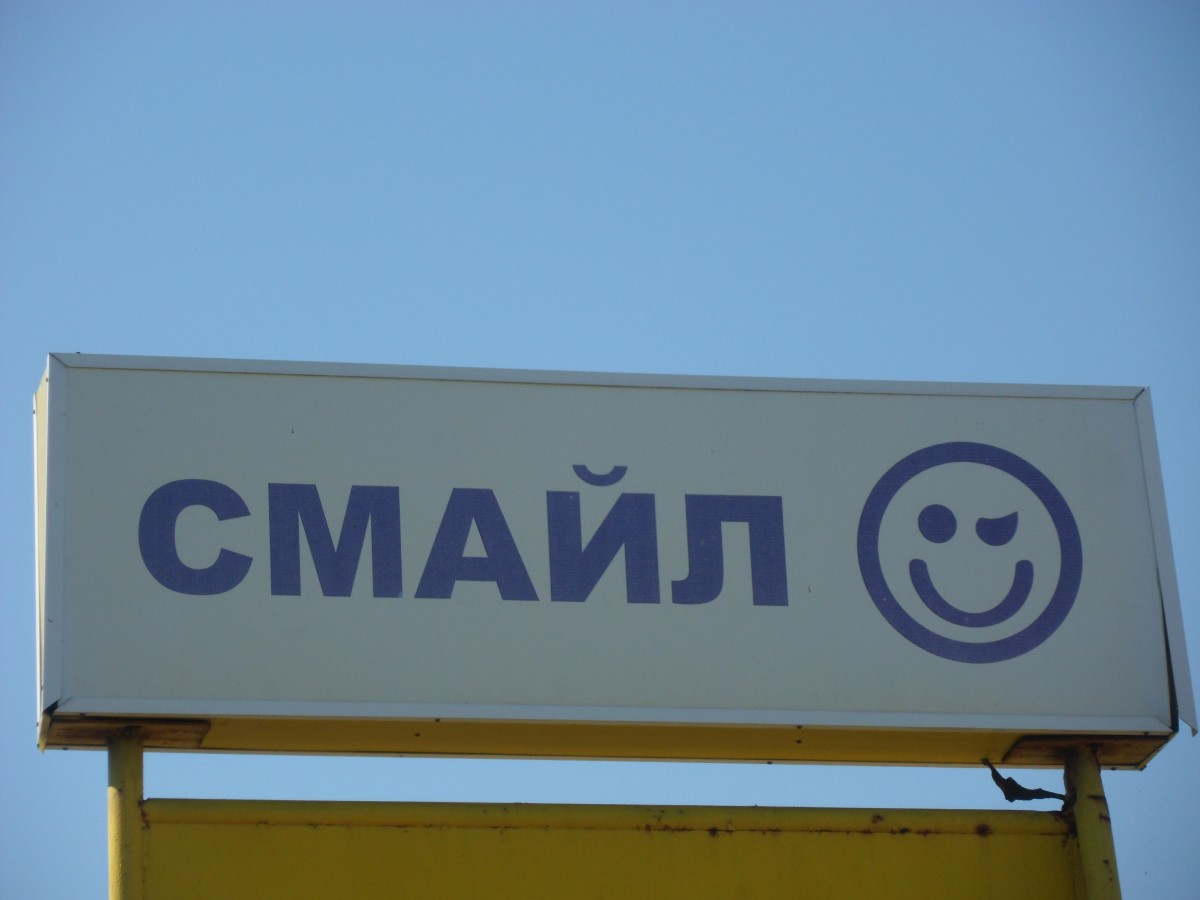 |
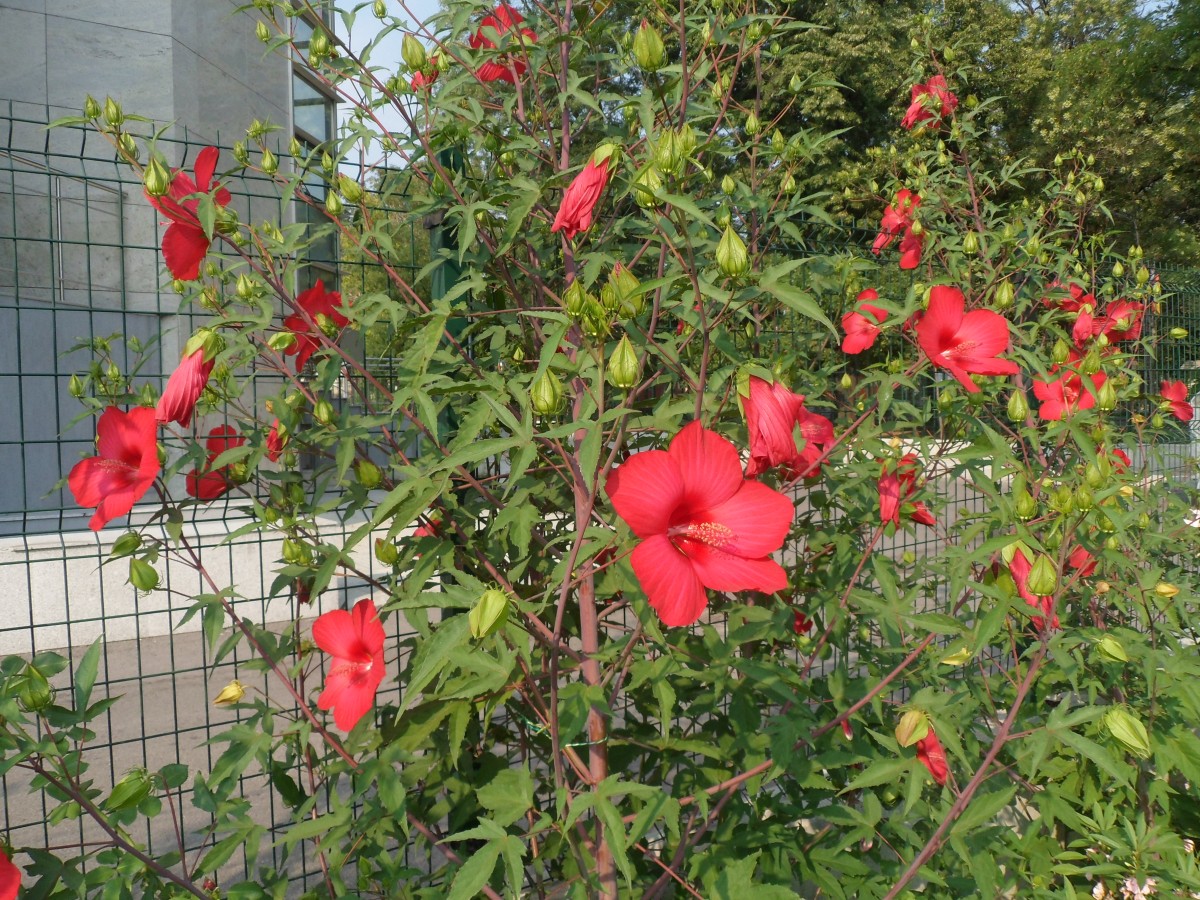 |
